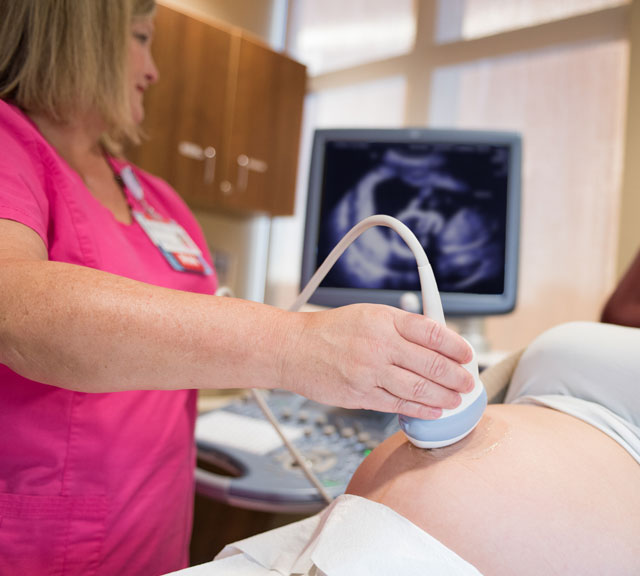Preterm Labor and Premature Birth: Am I at Risk?

Answer a few questions and we'll provide you with a list of primary care providers that best fit your needs.
You’re hoping and planning for a beautiful, healthy newborn. But sometimes, those plans can take a detour. How likely is it that your baby will be born too soon?
Premature labor occurs in about 12 percent of all pregnancies. The terms “preterm” and “premature” refer to the period of time during pregnancy that occurs prior to 37 weeks’ gestation, up to and including 36 weeks and 6 days.
Preterm birth can be serious. It’s the most common cause of infant death and one of the leading causes of long-term disability in children.
Who Is at Risk?
Women who are at a higher risk of preterm labor are those who:
- Have a history of a prior preterm delivery
- Have a short cervix
- Are pregnant with multiples
- Have had certain cervical procedures for treatment following an abnormal Pap test
- Are African-American. (African-American women have preterm births at approximately twice the rate of Caucasian women.)
“Just because you have a certain risk factor does not mean you will definitely have premature labor,” explains David S. McKenna, MD, a maternal-fetal medicine specialist with Perinatal Partners. “Also, many women who have no risk factors experience preterm births.
“All women should be assessed for having risks for preterm birth,” says Dr. McKenna. “There are screenings we can perform ahead of time to identify if a woman is at risk for preterm labor. There are also interventions we can provide to delay preterm labor.”
“Early on in a pregnancy, we can uncover problems or risk factors that could lead to premature birth."
What Causes Premature Births?
The underlying cause of many preterm deliveries is unknown. About half of preterm births occur in women with no risk factors. Research continues today that is aimed at uncovering the causes of premature birth and methods for delaying it.
In the cases where a cause can be determined, premature births are most often due to:
- Multiples (twins or more). Preterm births are the norm in the majority of pregnancies where a woman is carrying multiples.
- Indicated causes. These are situations where a maternal or fetal complication requires early delivery, such as preeclampsia or fetal growth abnormalities. About 25 to 33 percent of preterm births are indicated.
- Situations that won’t change or one-time causes. For example, a woman may have large fibroids in her uterus, which may lead to preterm deliveries in the future. Or a one-time event or situation might cause premature birth. For example, a car accident could cause a pregnant woman to experience trauma to the abdomen that triggers preterm labor.
Are There Signs I Should Watch For?
If you are pregnant, keep an eye out for the following symptoms of preterm labor, especially during the second and third trimesters:
- Bleeding
- Cramping
- Painful contractions
- Back pain
- An increase in vaginal discharge
- Leaking of fluid
If you’re a second-time mom, it’s important to know that with preterm labor, early contractions may feel very different from what they feel like at full term.
If you believe you’re going into preterm labor, call your doctor right away.
Are There Treatments for Preterm Labor?
Once preterm labor is diagnosed, there is not an effective treatment to stop it. Medications can sometimes be used to delay delivery for up to 48 hours, but not to completely prevent the delivery.
At this point, Dr. McKenna says, the care team’s goals shift to giving the newborn as much support as possible. In his practice, that is done in one or more of four ways:
- Giving antenatal steroids. These help the baby’s lungs mature and decrease the risk of neonatal respiratory distress syndrome.
- Administering magnesium sulfate (if less than 32 weeks). This decreases the baby’s risk of developing brain damage, especially cerebral palsy.
- Transporting mothers to a level III maternity hospital, such as Miami Valley Hospital. “It’s been found that at-risk babies born in a hospital with advanced neonatal capabilities do better than babies transferred after birth to a hospital with a neonatal intensive care unit,” says Dr. McKenna.
- Providing antibiotics for specific indications, including premature rupture of the membranes and prevention of neonatal streptococcal disease
Can Premature Birth Be Prevented?
Early prevention measures include:
- Early prenatal care. “Receiving early prenatal care is so valuable,” Dr. McKenna says. “Early on in a pregnancy, we can uncover problems or risk factors that could lead to premature birth. It allows us to monitor the entire pregnancy and plan accordingly if necessary.”
- Screening for cervical length, done with ultrasound. “We typically perform this ultrasound in women who have one or no prior full-term births, because a short cervix doesn’t produce any symptoms.”
If a woman is showing signs of going into preterm labor, evidence has shown the following measures can help prevent or delay delivery:
- Performing a cervical cerclage. In this procedure, the cervix is stitched closed. It may be done when the cervix is weak and not able to stay closed.
- Administering vaginal progesterone, for women with a short cervix
- Giving injectable progesterone, for women with a prior preterm birth
“Rest and activity restriction have not been shown to be helpful and, in fact, have been shown to be harmful in some instances, and bedrest is no longer routinely prescribed,” Dr. McKenna says.
When to Call the Doctor
Call your doctor if you have any of the symptoms listed above. Likewise, any time you feel something is out of the ordinary, or things don’t feel right with your pregnancy, get in touch with your doctor. Tests such as transvaginal ultrasounds (to measure the length of your cervix) can be very helpful in identifying the possibility of preterm labor.
It can be normal to have contractions starting at 20 weeks and throughout the rest of your pregnancy. Pay attention to your body. Know what’s normal for you, and if there’s a change from that, be sure to talk to your doctor about it.
Answer a few questions and we'll provide you with a list of primary care providers that best fit your needs.
Source: David S. McKenna, MD, Perinatal Partners; National Institute of Child Health and Human Development; The American Congress of Obstetricians and Gynecologists





